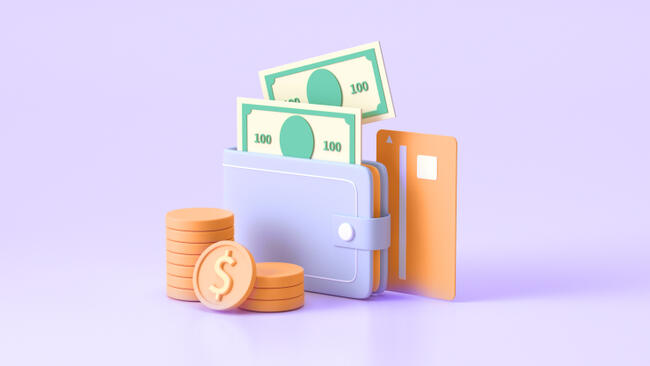Work gets a time shift as routines stretch and AI steps in
Work gets a time shift as routines stretch and AI steps in
The modern workday is flexing with new rhythms, smart tech, and a fresh take on when and how work happens
Work gets a time shift as routines stretch and AI steps in
The modern workday is flexing with new rhythms, smart tech, and a fresh take on when and how work happens


Listen
·Key takeaways:
Flexible work hours are becoming the norm, with more professionals working early mornings and late nights
AI is taking on repetitive tasks, freeing up time for deep focus and strategic work
Employees want work that aligns with life — and leaders are rethinking schedules, structures, and priorities to keep up
The traditional workday isn't vanishing, but it’s definitely evolving. Microsoft's latest Work Trend Index highlights how more professionals are working outside of conventional hours, creating what some researchers are calling an “infinite workday.”1
It’s not just a figure of speech. Nearly 40% of employees check email before 6 a.m.2 Evening activity is on the rise, too: about 30% of professionals now check messages after 10 p.m., and people send or receive an average of 117 emails a day.3 Meetings after 8 p.m. are more common, as are late-night one-on-ones and message exchanges.4
For many, this growing flexibility is a tradeoff, offering autonomy and focus time while also extending the edges of the workday. Microsoft’s data suggests this shift is less about pressure and more about preference, with many workers choosing to work at different hours to accommodate personal schedules or deepen concentration.5
Read more: Soft skills stand up in the workplace
Quiet time wins
Still, hybrid workers in particular report more stress between availability and expectations, while remote workers say that working in the evening provides a quiet time to be more productive and catch up.6 The takeaway for leaders? Time boundaries are more fluid, and setting clear norms can help teams work smarter and happier.
As business demands grow and technology accelerates communication, the workday no longer has a clear beginning or end. Time once spent on deep focus or recovery now often gets repurposed for prep and catch-up, especially in environments where clarity is hard to come by.7
Read more: The pursuit of workplace happiness
AI on the clock
Leaders are navigating this shift while balancing budgets and growing performance demands. One in three employees in Microsoft’s global survey said the pace of work over the past five years has made it harder to keep up.8 The challenge isn’t just about doing more, it’s about doing the right work, at the right time, in the right way.
This is opening the door to new approaches. With flexibility already built into many schedules, organizations have an opportunity to rethink not just when people work, but how work gets done.9
From optimizing meetings to reimagining team structures, the most adaptive organizations are reshaping how work flows.
Here are three strategies from Microsoft’s study:10
- Focus on prioritization - With high output and limited bandwidth, it’s important to prioritize. Many companies are focusing on the 20% of tasks that drive 80% of outcomes. With AI helping to streamline recurring tasks, more time can be directed to strategic thinking and decision-making.
- Reframe the org chart - Traditional team structures are giving way to more agile, outcome-focused models. Lean teams that form around specific goals and can flex based on needs. These cross-functional teams use tools like AI to fill skill gaps and move faster.
- Use AI for mundane tasks - AI is elevating how many professionals work. AI agents can handle tasks like research, analysis, and drafting, thereby freeing up time for strategy and insights, unlocking the capacity to focus on what matters most.
The rhythm reset
The 9-to-5 may no longer be the default. But flexibility alone doesn’t guarantee satisfaction. Empower research shows that workplace happiness is increasingly linked to how well work aligns with life, both financially and emotionally. For 65% of U.S. workers, financial joy starts with having a job they love. Nearly three-quarters (74%) say a better work/life balance would bring them more happiness – a number that climbs to 79% among Gen Z.
Get financially happy
Put your money to work for life and play
1 Microsoft, “Work Trend Index Special Report,” June 2025
2 The Wall Street Journal, “More of Us Are Putting in Extra Hours After the Workday,” June 2024
3 Microsoft, “Work Trend Index Special Report,” June 2025
4 Ibid
5 Ibid
6 Microsoft Research, “Triple Peak Day: Work Rhythms of Software Developers in Hybrid Work,” November 2024
7 Microsoft, “Work Trend Index Special Report,” June 2025
8 Ibid
9 Ibid
10 Ibid
RO4626479-0725
The content contained in this blog post is intended for general informational purposes only and is not meant to constitute legal, tax, accounting or investment advice. You should consult a qualified legal or tax professional regarding your specific situation. No part of this blog, nor the links contained therein is a solicitation or offer to sell securities. Compensation for freelance contributions not to exceed $1,250. Third-party data is obtained from sources believed to be reliable; however, Empower cannot guarantee the accuracy, timeliness, completeness or fitness of this data for any particular purpose. Third-party links are provided solely as a convenience and do not imply an affiliation, endorsement or approval by Empower of the contents on such third-party websites. This article is based on current events, research, and developments at the time of publication, which may change over time.
Certain sections of this blog may contain forward-looking statements that are based on our reasonable expectations, estimates, projections and assumptions. Past performance is not a guarantee of future return, nor is it indicative of future performance. Investing involves risk. The value of your investment will fluctuate and you may lose money.
Certified Financial Planner Board of Standards Inc. (CFP Board) owns the certification marks CFP®, CERTIFIED FINANCIAL PLANNER™, CFP® (with plaque design), and CFP® (with flame design) in the U.S., which it authorizes use of by individuals who successfully complete CFP Board's initial and ongoing certification requirements.





